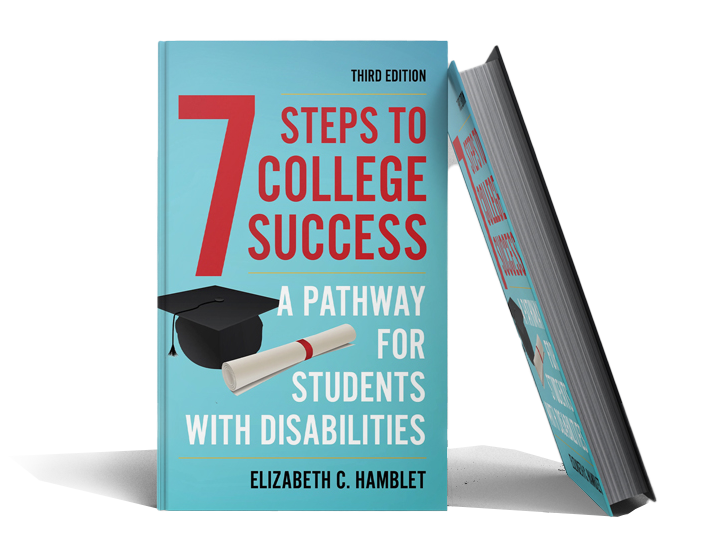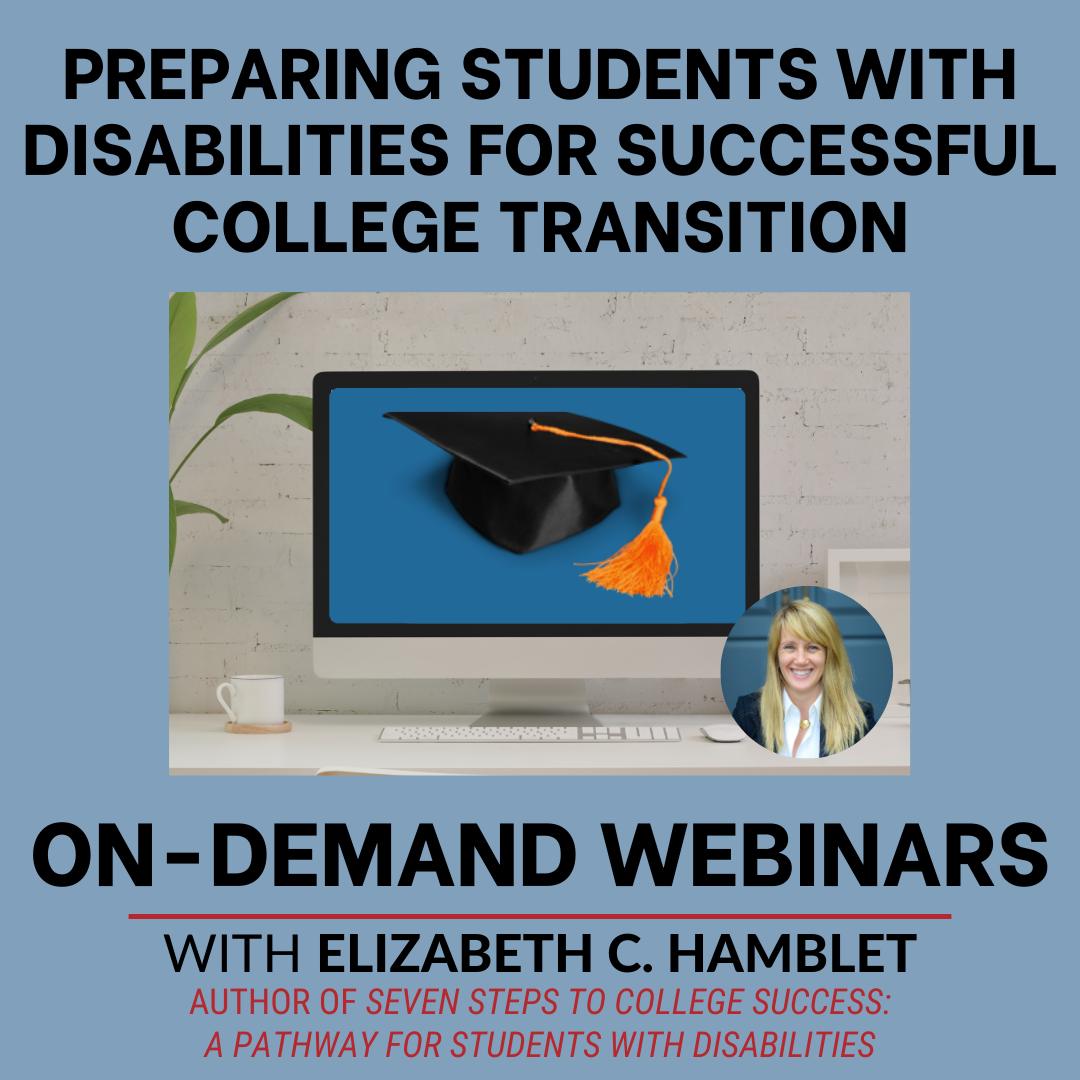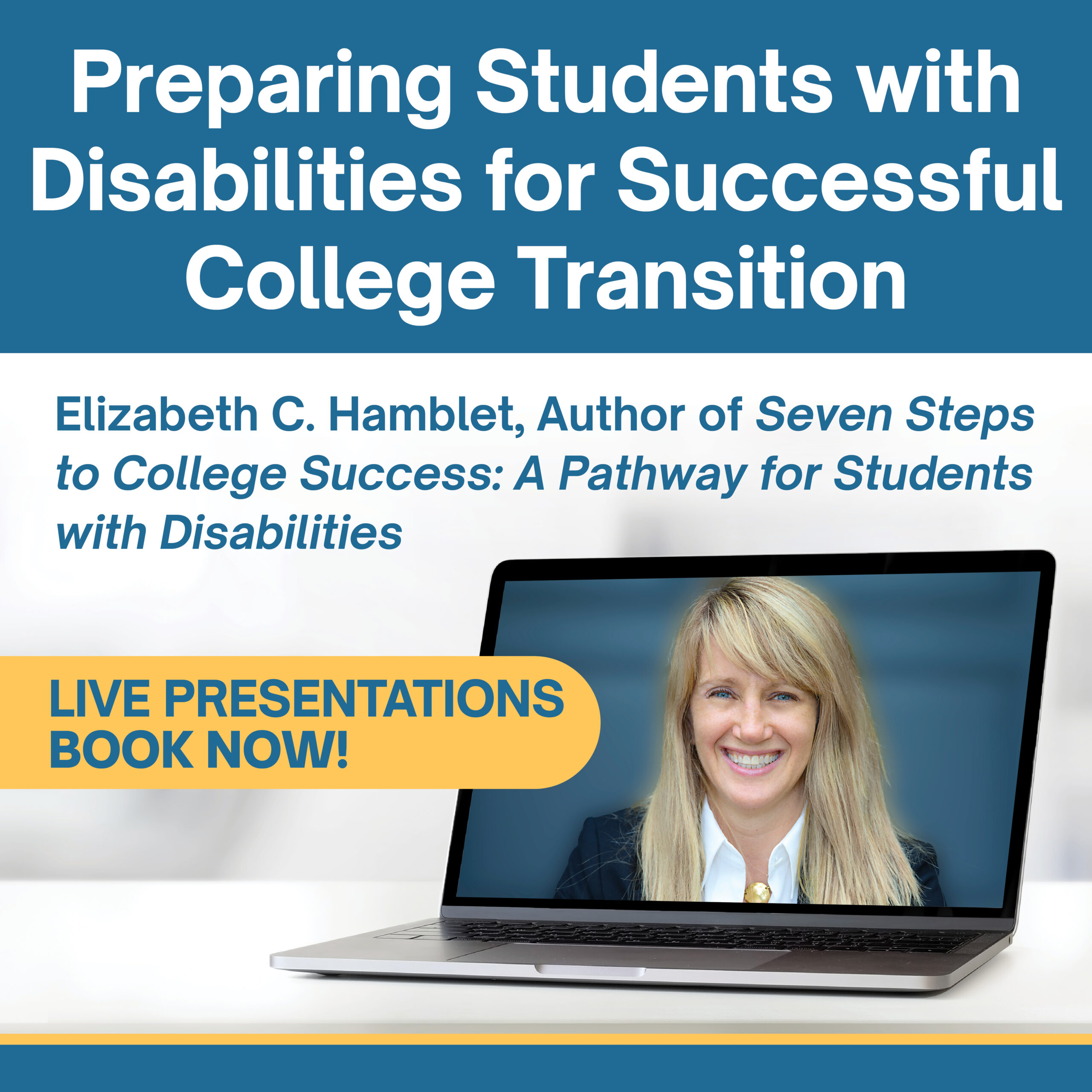Introduction
Because colleges don’t typically provide students with learning disabilities and ADHD with the human supports and modifications they might have received in high school, assistive technology (AT) can be an important tool to help them complete their work independently. The ideal situation would be for students to become fluent with AT before they arrive at college. However, students may not get access to AT before college for a variety of reasons. In some cases, it may be because the adults around them don’t have a sense of how much independence they’re going to need in college, or because they fear AT might interfere with the development of their skills.
When I developed my book, I spoke to AT specialists on both end of the transition and asked them their advice for parents/guardians and for professionals. Readers should be aware of another point that makes it crucial for students become fluent with AT while they’re still in high school – not all colleges have AT specialists like the ones featured in this post. And even when they do, these specialists might not be able to give students as much time and attention as they need to make the best use of the tools available.
Karen Janowski is an assistive & educational technology consultant at EdTech Solutions
Korey Singleton is the Assistive Technology Initiative (ATI) manager at George Mason University
Marvin Williams is the director of Disability Resource Services at CSU Stanislaus
Q. What is your advice for parents?
Janowski: Parents/guardians should be aware of the potential for certain unintended consequences that can arise from providing human help instead of AT.
One is that students might acquire a fixed mindset about their own abilities. They might assume that they’ll never be able to complete work independently, which isn’t true if they can be matched with the right tools.
Even if they’re not focused on their own potential as learners, another possible outcome of providing human help instead of AT is that students might not see the need to become independent readers or value the idea of becoming one. This short-sighted view can prevent them from engaging with any strategic instruction teachers are using with them and from seeing the value of getting fluent with AT, which will be helpful to them no matter what their post-secondary goals are.
Singleton: Parents/guardians who are concerned that technology tools will interfere with their student learning academic skills should know that students can quickly fall behind if they work or read slowly, and you want them to get and stay on pace as quickly as possible. Assistive technology is meant to complement those skills, not replace them.
The efficiency AT can offer is really important. All students have to make adjustments as they transition to the college environment, where they encounter new social, academic, and self-management demands. In the face of these changes, students might feel overwhelmed and not think they have enough time to also work on getting used to using AT, even though it will mean that work will likely take a lot less time.
If they become fluent in using AT before college, it means they’ll not only have more time to work on these new challenges, but they’ll also have one less learning curve to tackle in this environment where demands are increased and support is decreased. Parents/guardians should think about how this might help to reduce the stress of that transition.
Williams: Parents/guardians should recognize that these tools are not there to help students avoid doing work, and students don’t utilize them because they’re lazy.
These are just tools to help make work more efficient, just like the car they drove to work today. Could they have walked to work today? Yes, but it made more sense to drive. It’s the same with the technology tools – they help students to do their work more quickly so that they can get more done, not avoid work.
That said, if parents have concerns, they should start by asking the school why these tools have been recommended and how they will help their student in the future.
Q. What’s your advice for high school professionals?
Janowski: They should make sure IEPs focus on students’ future need for independence. Both students and adults need to have a realistic sense of what students can accomplish without the kinds of human assistance they have been receiving both at school and at home because that kind of help is unlikely to be available at college (ex. students are unlikely to get human readers or scribes for their assignments). IEP teams should assess students’ level of independent functioning at the start of high school and figure out what tools and training will get them where they need to be by the time they graduate. That’s where AT is crucial – the tools can help students complete work without such human assistance.
Singleton: For professionals, I think it’s important to realize that introducing students to technology sooner rather than later will not only help to prepare them for college transition, but also for their eventual transition into the workforce. They should not lose sight of this goal.
Focusing on education specifically, though – the problem with thinking that they will learn about the assistive technology at college is the amount of time involved. By nature of the fact that they have learning and attention disabilities, these students are going to struggle more than their typical peers because they have to focus on learning to use both the assistive technology and the educational technology that is a part of the curriculum. Getting them used to AT while they are still in high school will remove this adjustment from the list of others they’ll have to make in this new environment.
When I work with students at the college level, I have to build in preparation time so that the technology becomes second nature. But it would be so much better for students if they could get accustomed to these tools while they are in high school so that they are ready to go when they hit college.
Williams: I think that school districts need to understand the importance of students’ becoming fluent in the use of AT before college. This means everyone has to work together.
It’s critical that districts have dedicated AT people who know how to evaluate students’ needs and connect them with the right tools so that they reduce the chances of students’ getting frustrated with technology that isn’t right for them, given their strengths and limitations.
It’s equally important that these AT professionals work with classroom teachers to make sure that the technology is being used by students. This means making sure teachers have passing knowledge of how students benefit from these tools so that they don’t see them as distractions or some sort of advantage. It also means ensuring that they can help troubleshoot problems that arise, which can help to prevent students from becoming frustrated and giving up. These specialists should also train parents, too, so that parents/guardians can do the same things at home.
Learn about helpful technology built right into students’ computer operating system plus other kinds of technologies. Watch a webinar Singleton did right here on my Youtube channel.




